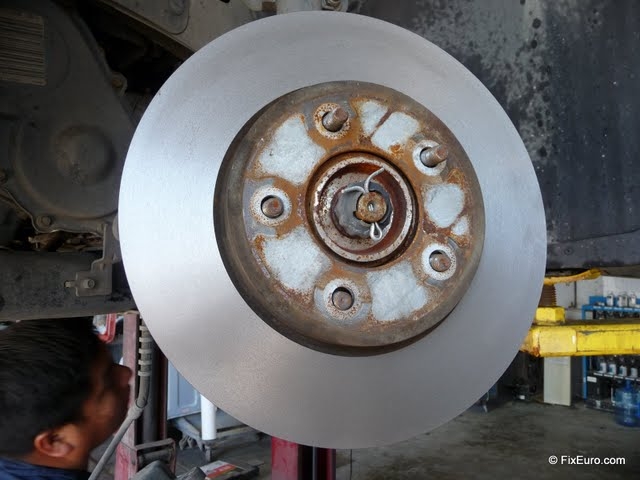
The caliper on the brake assembly clamps a pair of brake pads against the rotor to slow or stop the vehicle as you step on the brake pedal. All these components make up the brake rotor assembly, an important section of the brake system, the most important safety feature on your car. However, problems may develop on the brake rotors after years of service.
There are several symptoms produced by a bad rotor or brake system affecting rotor operation: when a rotor becomes warped, out-of-round or heat checked, it will produce a vibration you can feel on the brake pedal; when a brake hose or line leaks and coats the rotor friction surface, it may cause your vehicle to pull to one side as you apply the brakes. In some cases, fluid contamination will cause the brakes to remain applied, overheating the brake assembly.
The brake rotor is a metal disc that works in conjunction with the brake pads. Depending on your vehicle make and model, the disc and hub may form a single unit. Although, conventional rotors provide a smooth friction face, sport or performance rotors use a ventilated, slotted disc to dissipate heat more rapidly. This reduces the possibility of rotor warping and heat checks.
When checking your brake rotors for problems, examine the rotor surface for cracks, score marks and heat spots, which can create braking problems like pulsating brakes. Use a micrometer to measure disc thickness in various places around the disc; use a dial indicator to check for disc runout. Compare your measurements to the specifications provided on your vehicle service manual. Some imperfections on the rotor surface may be fixed by resurfacing the rotor in a machine shop, if the rotor is thick enough. If this is not possible, replace the rotor.
When you depress the brake pedal to slow or stop the vehicle as you speed down the road, some of the car's weight is transferred to the front of the vehicle, forcing the front brake rotors to do most of the braking power. According to James E. Duffy, in "Modern Automotive Technology," front brakes handle close to 70 percent of the braking action. Since brake rotors are more efficient than drum brakes, they are more common on front tires.
Check the brake system at your car manufacturer recommended intervals to avoid brake rotor and other related problems. If you notice an abnormal condition as you operate the brakes, take your car to an auto shop for immediate inspection to prevent serious road accidents.